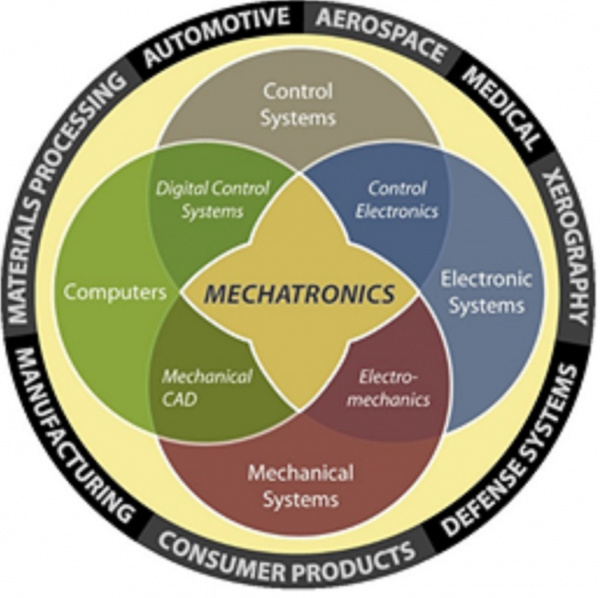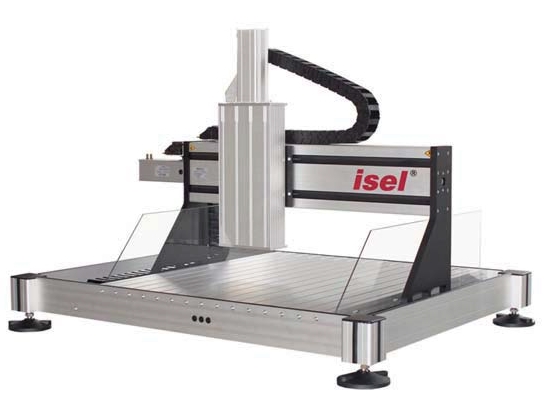The What, Why, How, and Who of Mechatronics
By Dr. Kevin Craig,
Professor of Mechanical Engineering,
Hofstra University
The What, Why, How, and Who of Mechatronics
Twenty-seven years ago, in 1991, I was a young, untenured, assistant professor in the Mechanical Engineering Department at Rensselaer Polytechnic Institute. I was teaching required courses in design and controls and had not yet created an elective course of my own, which all young professors were expected to do. A colleague of mine, Mark Darlow, had created and taught an elective course called Computer-Aided Experimentation. He was taking a sabbatical leave at the Technion in Israel and he offered his course to me to teach saying that I could modify it as I wished. I reviewed the course Mark created and saw an opportunity to expand its scope. I had heard the word mechatronics, but did not know much about the subject, other than the fact that the word originated in Japan in the 1970s as microprocessors were being added to mechanical systems making them “smart.” The course I offered as a senior elective / graduate course was called Mechatronics. The rest, as they say, is history. The Mechatronics Program at RPI, both undergraduate and graduate, flourished over the next 16 years; twenty Mechatronics Ph.D. students graduated under my supervision. The diagram you see, showing the essence of mechatronics, was created by me in 1995. It is used today worldwide in universities, industry, and on the Internet. Let me tell you about mechatronics, as the subject has evolved at the beginning of the 21st century.

Mechatronics represents the answer to the question “How can any engineering company be successful in the 21st century when electronics, computers, and control systems are integral parts of an overall system or product and performance, reliability, low cost, and robustness are absolutely essential? Mechatronics is the 21st-century approach to the engineering design, manufacture, and operation of an increasingly wide range of industrial products and processes and also involves aspects of company organization, training, and management.
Mechatronics is the synergistic integration of physical systems, electronics, controls, and computers through the design process, from the very start of the design process, thus enabling complex decision making. Integration is the key element in mechatronic design as complexity has been transferred from the mechanical domain to the electronic and computer software domains. Mechatronics is an evolutionary design development that demands horizontal integration among the various engineering disciplines as well as vertical integration between design and manufacturing. It is the best practice for synthesis by engineers driven by the needs of industry and human beings. Real-time computation is exploited to create systems that are qualitatively unlike any that came before. Real-time computation, unlike conventional computation, must deliver correct results at the correct time, embodies the concept of duration, is often safety-critical, and involves asynchronous operations, which are the heart and soul of real-time computation. Why should a company adopt a mechatronic design culture? 21st-century companies must use technology to increase the competitiveness of their products and must be able to respond rapidly and effectively to changes in the market place. A mechatronic approach to engineering provides a company with a competitive advantage through the development of innovative products and through the enhancement of existing products. As an example, automotive systems have become increasingly more mechatronic in nature with features such as engine-management systems, traction control, and ABS now commonplace. Further developments include drive-by-wire, collision-avoidance systems, lane tracking, and navigational control. Of course, mechatronics can be taken a little too far. One automobile now has a self-parking feature; it is so realistic that after it parks your car, it changes all the presets on your radio, steals the spare change out of your ashtray, and leaves the seat all the way back!
Professor of Mechanical Engineering,
Hofstra University
| Next - Accuracy and Repeatability |
The What, Why, How, and Who of Mechatronics
Twenty-seven years ago, in 1991, I was a young, untenured, assistant professor in the Mechanical Engineering Department at Rensselaer Polytechnic Institute. I was teaching required courses in design and controls and had not yet created an elective course of my own, which all young professors were expected to do. A colleague of mine, Mark Darlow, had created and taught an elective course called Computer-Aided Experimentation. He was taking a sabbatical leave at the Technion in Israel and he offered his course to me to teach saying that I could modify it as I wished. I reviewed the course Mark created and saw an opportunity to expand its scope. I had heard the word mechatronics, but did not know much about the subject, other than the fact that the word originated in Japan in the 1970s as microprocessors were being added to mechanical systems making them “smart.” The course I offered as a senior elective / graduate course was called Mechatronics. The rest, as they say, is history. The Mechatronics Program at RPI, both undergraduate and graduate, flourished over the next 16 years; twenty Mechatronics Ph.D. students graduated under my supervision. The diagram you see, showing the essence of mechatronics, was created by me in 1995. It is used today worldwide in universities, industry, and on the Internet. Let me tell you about mechatronics, as the subject has evolved at the beginning of the 21st century.

Mechatronics represents the answer to the question “How can any engineering company be successful in the 21st century when electronics, computers, and control systems are integral parts of an overall system or product and performance, reliability, low cost, and robustness are absolutely essential? Mechatronics is the 21st-century approach to the engineering design, manufacture, and operation of an increasingly wide range of industrial products and processes and also involves aspects of company organization, training, and management.
Mechatronics is the synergistic integration of physical systems, electronics, controls, and computers through the design process, from the very start of the design process, thus enabling complex decision making. Integration is the key element in mechatronic design as complexity has been transferred from the mechanical domain to the electronic and computer software domains. Mechatronics is an evolutionary design development that demands horizontal integration among the various engineering disciplines as well as vertical integration between design and manufacturing. It is the best practice for synthesis by engineers driven by the needs of industry and human beings. Real-time computation is exploited to create systems that are qualitatively unlike any that came before. Real-time computation, unlike conventional computation, must deliver correct results at the correct time, embodies the concept of duration, is often safety-critical, and involves asynchronous operations, which are the heart and soul of real-time computation. Why should a company adopt a mechatronic design culture? 21st-century companies must use technology to increase the competitiveness of their products and must be able to respond rapidly and effectively to changes in the market place. A mechatronic approach to engineering provides a company with a competitive advantage through the development of innovative products and through the enhancement of existing products. As an example, automotive systems have become increasingly more mechatronic in nature with features such as engine-management systems, traction control, and ABS now commonplace. Further developments include drive-by-wire, collision-avoidance systems, lane tracking, and navigational control. Of course, mechatronics can be taken a little too far. One automobile now has a self-parking feature; it is so realistic that after it parks your car, it changes all the presets on your radio, steals the spare change out of your ashtray, and leaves the seat all the way back!
How does a company achieve this transformation?
The achievement of a successful mechatronics design environment essentially depends on the ability of the design team to communicate, collaborate, and integrate. Indeed, a major role of the mechatronics engineer is often that of acting to bridge the communications gaps that can exist between more specialized colleagues in order to ensure that the objectives of collaboration and integration are achieved. Over the past 25 years, I have conducted numerous mechatronics workshops for practicing engineers at companies such as Xerox and Procter & Gamble. Skills lacking in professional engineers, which the participants all generally agree on and which thus need to be remedied for a mechatronics culture to take hold include: control design and implementation is still the domain of the specialist; controls and electronics are still viewed as afterthought add-ons; very few practicing engineers perform any kind of physical and mathematical modeling; mathematics is a subject that is not viewed as enhancing one’s engineering skills but as an obstacle to avoid; and very few engineers have the balance between analysis and hardware essential for success in mechatronics.Who owns mechatronics?
Universities are creating mechatronics degree programs; industry is creating mechatronics departments. In my view, this is all misguided. Mechatronics is evolutionary, not revolutionary; it is what mechanical engineering has become. Electronics, control systems, and real-time microcomputer programming are now as important for the mechanical engineer as traditional subjects, such as thermodynamics and machine design. In the end, the machine must work as envisioned, and that responsibility rests with the mechanical engineer. |
| Instant Automation - Out of the box Check out the FLAT BED GANTRY ROBOT We also offer a family of Automated Workcells |


